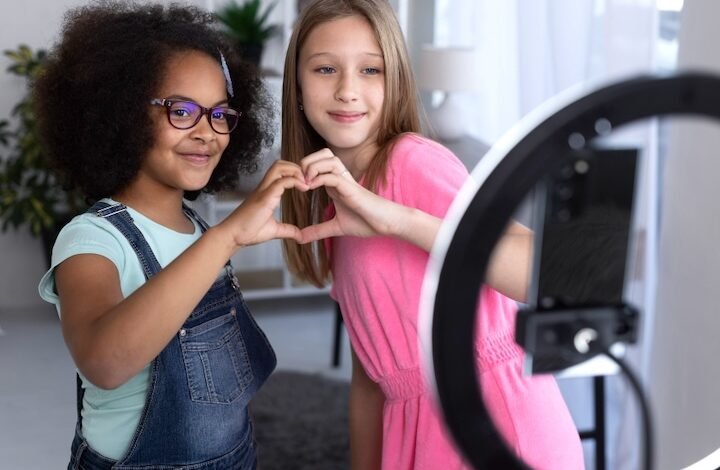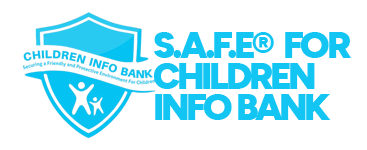Inside the World of Childfluencers: Fame, Fun, and Hidden Dangers

Have you ever come across a two-year-old’s Instagram account? Or see a TikTok with adorable and goofy 4-year-olds that has garnered tens of thousands of views and likes? Not to mention YouTube, where child influencers are dominating with vlogs, skits, toy unboxing, and other crazy challenges.
Childfluencers have been increasingly popular in online marketing over the last 20 years, and a Netflix documentary has been made on them. What happens when harmless videos turn into something far more? Are these children just enjoying themselves, or is there more going on behind the screens? When it comes to exposing children to the internet, parents should consider how much is too much.
What is Childfluencing?
A child who has a considerable social media following and uses their platform to advertise goods and services to their audience is known as a child influencer. They might either be part of a marketing effort or produce sponsored content with brands. They also share their experiences, interests, and hobbies with their followers and produce content.
Childfluencing is a complicated world full of colorful, clickbait-style thumbnails and extremely stimulating content. These children’s popularity is fueled by likes, views, and brand deals. And most of them make “crazy” numbers out of their content, with some making as much as $30,000 a month.
A popular example is Ryan Kaji, who reviews toys on Ryan’s World (previously Ryan ToysReview), and has over 38.5 million subscribers and over 59.4 billion views, making him one of the pioneer childfluencers and perhaps the highest-paid. In 2020, he made about $29.5 million.
Childfluencers can participate in family vlogging channels, which have become more popular in recent years. Across a variety of platforms, people watch these videos to see children grow up with the accompanying likes, shares, and video saves, indicating engagement.
Is it exploitative? Is it safe?
The enormous profits and fame from these contents may initially appear harmless and even fun. However, there is the worry about exploitation, internet safety, and ethics alongside the popularity of childfluencers. There have been instances where children are forced to produce inappropriate content, and some parent influencers have been imprisoned.
“Bad Influence: The Dark Side of Kidfluencing,” a Netflix series, centers on 11-year-old Piper Rockelle, a well-known YouTuber. The documentary exposes the sinister reality of her fame, where Piper and her friends were forced to film inappropriate content as planned by her mother. The Netflix series also revealed a situation where a fan created accounts using Piper’s photos and posted inappropriate comments while posing as a girl, while in reality, the fan was an older male.
The question remains: where do we draw the line? How do we distinguish between a parent who is merely expressing their happiness and one who is truly going too far in taking advantage of their child?
Sometimes childfluencers are at the receiving end, they can be exploited because the line isn’t always obvious. Childfluencing might have a greater effect on children than we realize because of the toll of constant shooting, pressure to create content, and growing up in the spotlight.
The Effect of Childfluencing on Children
There are benefits to being a childfluencer. Some children love creating content, and it can foster creativity and self-esteem while also serving as an enjoyable family activity. However, the distinction between work and recreation can become blurred when factors like income and views are involved.
Some children experience pressure to continuously produce content to remain relevant in the space. Such pressure can cause anxiety and affect their sense of self-worth. Let’s not forget that there are hateful comments out there directed at real children with no regard for their mental health. These hateful comments can hurt deeply in a society where likes are equated with validation.
Also, little can be done to prevent overstretching these children or even exploitation in the absence of appropriate restrictions, unlike those protecting child actors.
The negative effects of childfluencing were depicted in Netflix’s Bad Influence: The Dark Side of Kidfluencing, which included 12-hour workdays, verbal and even sexual assault. The difference between acting in your child’s best interests and the algorithms can easily become blurry when parents manage their children.
What Can Parents Do to Protect Their Children?
Parents of childfluencers should make their children understand that content creation isn’t everything. Discuss with them what they see on the internet, help them distinguish fact from fiction, and remind them that their value is not determined by likes and follows.
Parents should pay attention to privacy. Don’t post too many intimate pictures or details, and perform follower list audits occasionally to identify suspicious accounts.
Above all, make sure to check in on your child’s mental health. With adequate knowledge and boundaries, parents of childfluencers can ensure their children are safeguarded, respected, and reminded that they are loved for who they are, not for what they post.

